|

On eBay Now...
X-RARE Set of 12 Chinese Tang Dyn. Buddhist \"Rainbow Glass\" Zodiac Figurines For Sale
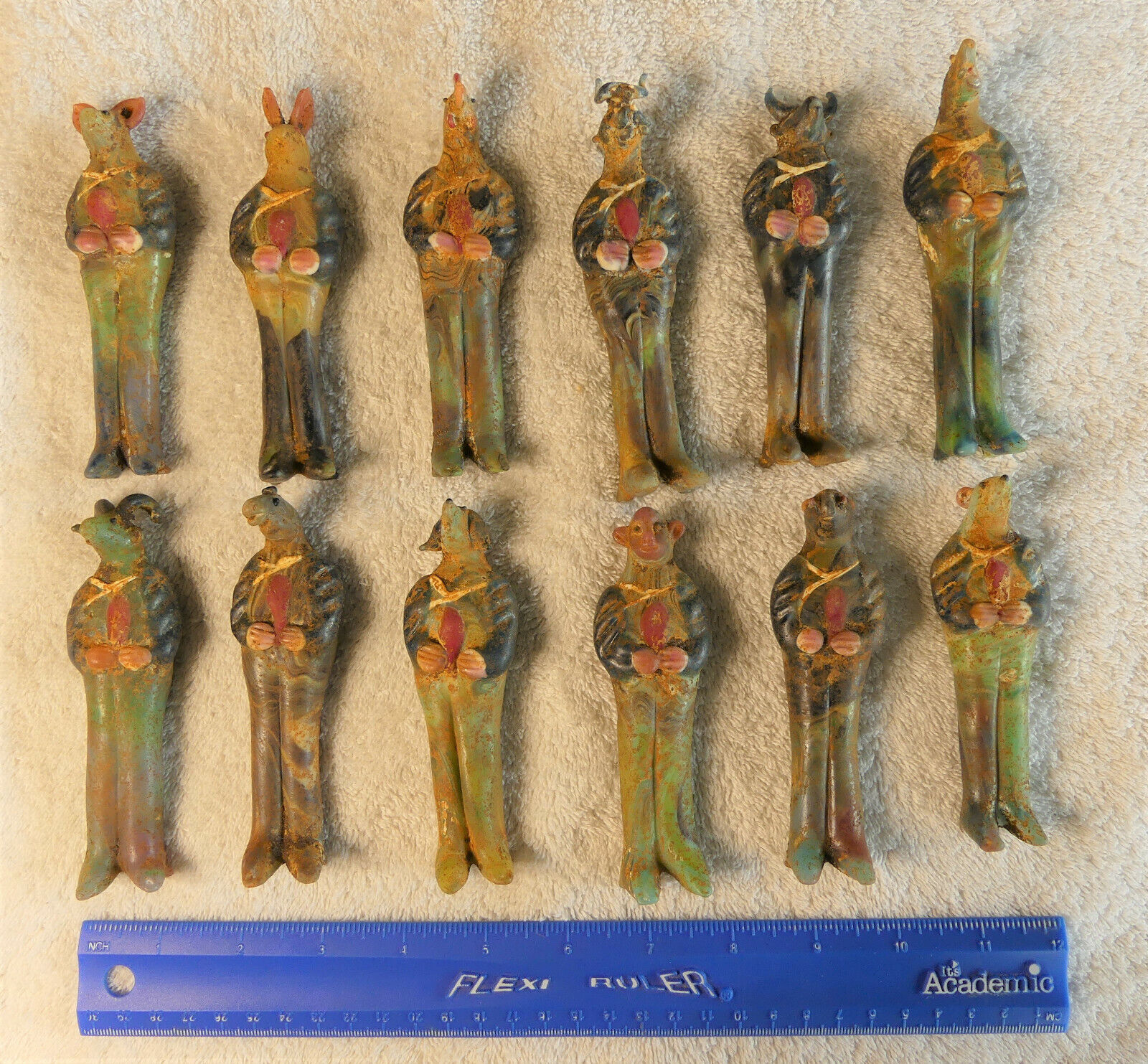
When you click on links to various merchants on this site and make a purchase, this can result in this site earning a commission. Affiliate programs and affiliations include, but are not limited to, the eBay Partner Network.

X-RARE Set of 12 Chinese Tang Dyn. Buddhist \"Rainbow Glass\" Zodiac Figurines:
$16375.00
ANCIENT CIVILIZATIONS
Artifacts, Antiques, & Fine Collectibles
A Complete Set of 12 Chinese Glass Zodiac Figurines
Ancient Buddhist “Rainbow Glass” Zodiac Animals Chinese Zodiac: 生肖 Shēngxiào c. T’ang Dynasty 618 AD—907 AD
PROVENANCE/HISTORY
These 12 ancient, glass Zodiac Animal figurines were obtained from an old collection that once was held in Henan, China. The collection was reportedly moved to Hong Kong in the 1960s. This is the first time it has been offered for sale in the United States. This museum quality set is EXTREMELY RARE and is Guaranteed authentic and original!
This item is legal to buy/sell under U.S. Statute covering cultural patrimony Code 2600, CHAPTER 14, and is guaranteed to be as described or your money back. This item will come with a Certificate of Authenticity (COA) from ANCIENT CIVILIZATIONS.
OVERVIEW These 12 Chinese Glass Zodiac figures are a complete set of Ancient Chinese Astrology or Zodiac animals, in Chinse 生肖 Shēngxiào. Each of the 12 animals of the Chinese Zodiac have an animal head and the body of a human—in other words zoomorphic. They are estimated to be over 1,000 years old and like all my ancient treasures, I Guarantee them to be 100% original and ancient or your money back. Each of the 12, solid-glass figures measure approximately 4.5” to 5.0” tall x 1.5” wide x .60” in depth (124 x 38 x 23 mm). And each one weighs approximately 4.2 oz. or 119 gr. The following animals from the Chinese Zodiac represent the 12 animals that comprise the rotating 12-year-cycle that is the basis of China’s Zodiac. The year 2019 is the Year of the Rat—the beginning of a new 12-year-cycle. The 12 zodiac signs are, in order: rat (鼠—shǔ), ox (牛—niú), tiger (虎—hǔ), rabbit (兔—tù), dragon (龙—lóng), snake (蛇—shé), horse (马—mǎ), goat (羊—yang), monkey (猴—hóu), rooster (鸡—jī), dog (狗—gǒu), and pig (猪—zhū). This is the first complete set of 12 ancient and original Zodiac figures from the Tang Dynasty that I have had the pleasure to have in my personal collection and one of the few complete sets in any museum in the world! Several years ago, I sold a set of 7 Chinese Zodiac animals to a private collector, but to have a complete, ancient set of all 12 is just amazing! Each figure is form in a mold of a rainbow mixture of translucent glass. They are all in as found condition and they still have a heavy coating of iron oxide on their surface from 1,000 years contact with iron-rich soil. Upon close examination, none appear to have any repairs or restorations! Just incredible!! There exists in Buddhism the concept of a “rainbow body” and this is symbolized by the FANSTANSIC mixed, rainbow colors of these 12 zodiac animals. The “rainbow body” is the penultimate transitional state of meditation in which matter begins to be transformed into pure light. The rainbow body signifies the awakening of the inner self to the complete reservoir of terrestrial knowledge that it is possible to access before stepping over the threshold to the state of Nirvana. Each of the 12 zodiac animals with rainbow colors holds a precious red flame in their hands. In Buddhism, meditating on the color red transforms the delusion of attachment into the wisdom of discernment. Buddhists symbolically meditate inside the flame and therefore, red candles are often light during mediation. The tapering of the flame to a point can also be said to represent consciousness.
THE T\'ANG DYNASTY
The influence of Buddhism in China reached its peak during the T\'ang Dynasty (618 to 907). Buddhist arts flourished and monasteries grew rich and powerful. Factional strife came to a head in 845, however, when the emperor began a suppression of Buddhism that destroyed more than 4,000 monasteries and 40,000 temples and shrines.
This suppression dealt a crippling blow to Chinese Buddhism and marked the beginning of a long decline. Buddhism would never again be as dominant in China as it had been during the T\'ang Dynasty. Even so, after a thousand years, Buddhism thoroughly permeated Chinese culture and also influenced its rival religions of Confucianism and Taoism. THE CHINESE ZODIAC
The Chinese zodiac is made up of 12 animals and together they are known as 生肖 shēngxiào. The first animal in the cycle is the rat, followed by ox, tiger, rabbit, dragon, snake, horse, goat, monkey, rooster, dog and pig.
Most people are aware that each year is associated with one of the 12 animals, but did you know that the Chinese zodiac extends to months, days, and hours as well? These four time periods are known as the Four Pillars of Destiny and each pillar is related to a different part of your life. There are many varieties of this story. Some say that the Jade Emperor called a race of animals on his birthday to create the Chinese zodiac. Others say that it was in fact, the Buddha who did. Nevertheless, both stories are essentially the same, excluding some minor details. According to myths, the twelve animals of the Chinese zodiac were selected through a race. This race is meant to create a time measurement for the people. There could only be twelve winners and in order to win, the animals had to cross a rapid current river and reach the finish line on the shore. The order of the lunar calendar follows the outcome of the race, where the rat is the first animal to start the sequence, and the pig is the last. After the pig, the sequence starts over again. The lunar calendar has been a significant calendar for China and the Chinese zodiac. Many parts of the world are also familiar with this calendar.
Actual History of the Zodiac {Ref: Wikipedia}
The actual history behind the Chinese zodiac is much less fantastical and much harder to find. It’s known from pottery artifacts that the animals of the zodiac were popular in the Tang Dynasty (618-907 A.D.), but they were also seen much earlier from artifacts from the Warring States Period (475-221 B.C.), a period of disunity in ancient Chinese history, as differing factions fought for control. It’s been written that the animals of the zodiac were brought to China via the Silk Road, the same central Asian trade route that brought the Buddhist belief from India to China. But some scholars argue that the belief predates Buddhism and has origins in early Chinese astronomy that used the planet Jupiter as a constant, as its orbit around the earth took place every 12 years. Still, others have argued that the use of animals in astrology began with nomadic tribes in ancient China who developed a calendar based on the animals they used to hunt and gather. The scholar Christopher Cullen has written that beyond satisfying the spiritual needs of an agrarian society, the use of astronomy and astrology was also an imperative of the emperor, who had the responsibility for ensuring harmony of everything under heaven. To rule well and with prestige, one needed to be accurate in astronomical matters, Cullen wrote. Perhaps that is why the Chinese calendar, including the zodiac, became so entrenched in Chinese culture. In fact, reforming the calendar system was viewed as appropriate if political change was eminent. The zodiac cycle repeats every 12 years: 1. Dragon 2. Boar/Pig 3. Ram/Goat 4. Dog 5. Rabbit 6. Ox 7. Tiger 8. Monkey 9. Snake 10. Horse 11. Rooster 12. Pig
The general consensus is that the zodiacs found in tombs originally had something to do with the passage of time and the, of course, the worship of animals.
A zodiac system has existed in Chinese culture since the Qin dynasty, more than 2,000 years ago.
Over time the zodiacs became more and more integrated into everyday life, with different meanings and characteristics assigned to each animal. This in turn gave rise to various compatibilities (and incompatibilities) between each zodiac, and play a major role in marriage and career decisions, fortune-telling, and many more aspects of life.
BUDDHISM IN CHINA Buddhism arrived in China around the 1st century AD and introduced new types of art into China, particularly in the area of statuary. Upon receiving this distant religion, strong Chinese traits were incorporated into Buddhist art. The first Buddhist sculpture is found dating from the Three Kingdoms period during the 3rd century, while the sculpture of the Longmen Grottoes near Luoyang, Henan Province of the Northern Wei, 5th and 6th century has been widely recognized for its special elegant qualities.
In the 5th to 6th centuries, the Northern Dynasties, developed rather symbolic and abstract modes of representation, with schematic lines. Their style is also said to be solemn and majestic. The lack of corporeality of this art, and its distance from the original Buddhist objective of expressing the pure ideal of enlightenment in an accessible and realistic manner, progressively led to a change towards more naturalism and realism, leading to the expression of Tang Buddhist art starting in the 7th century.
In the second half of the sixth century, China, long divided into north and south, is further subdivided into the northwestern and northeastern regions ruled by different factions of the once-powerful Northern Wei empire. The reunification of China under the subsequent Sui and Tang dynasties initiates a period of prosperity, trade relations, and far-reaching influence. Chang\'an, their capital, was one of the largest and richest cities in the world. Art and literature flourish, reflecting influences from the different cultures with which China maintains diplomatic and trade relations. In addition to painting and calligraphy, Tang is noted for its Buddhist sculpture, metalwork, and ceramics, both brightly glazed tomb figures and white-bodied vessels. After the fall of the dynasty in 907, China is once again divided into north and south, ruled by competing dynasties and kingdoms. COLOR SYMBOLISM IN BUDDHISM
Buddhism traveled from India into China during the 1st century AD, becoming part of Chinese life and culture alongside the other established belief systems. Statues and Buddhist-related figures like these were commissioned by followers.
The colors used in these glass figurine were not chosen just for their beauty, but also for their symbolism in the Buddhist religion. Color symbolism is used in a wide variety of fascinating ways in Buddhist art and ritual. In Buddhism, each of five colors (pancha-varna: which are Blue, Black, Red, Green and Yellow) symbolizes a state of mind, a celestial Buddha, a part of the body, a part of the mantra word Hum, or a natural element. It is believed that by meditating on the individual colors, which contain their respective essences and are associated with a particular Buddha or bodhisattva, spiritual transformations can be achieved. REFERENCES: This EXTREMELY RARE and complete Zodiac Set was reportedly obtained from an old collection in Hong Kong. They were reportedly uncovered in China’s Qinghai Province, which is located on the Northeastern part of the Qinghai-Tibet Plateau in Western China. Included in Qinghai Province are the cities of Golob, Haibei, Hainan, and Haixi. Historically, the city of Beichan was first built during the Northern Wei period (386-534).
Chinese History Museum in Beijing contains an outstanding collection of early Chinese glass objects, including a small aqua cup that was found in a Han Dynasty tomb in Guangxi Province, China.
Similar examples can be found in China’s famous Palace Museum in Beijing or in the National Palace Museum in Taipei and at the MET see Qing Dynasty Jade Zodiac set, # 02.18.730a-l in Display Gallery 222.
See “Ancient Glass Research Along the Silk Road” Edited by Gan Fuxi (Chinese Academy of Sciences & Fudan University, China), Robert Brill (The Corning Museum of Glass, USA), & Tian Shouyun (Chinese Academy of Sciences, China). This book states that ancient Chinese glass from the Eastern Han Dynasty to the Tang Dynasty (200-700 AD) contained High Lead Silicate or PBO-SiO2. Although chemical tests have not been run on these 12 glass figures, it is believed that they all are made from this glass composition.
The Qinghai Museum is located at No.4 Weimin Alleyway, Xining. Over 10,000 items are displayed, including a collection of Han Dynasty artifacts, Mongolian pottery, Tibetan mani-stones (stones carved with religious prayers and images), and glass figurines like this set of glass figurines.
See “Scientific Research in Early Chinese Glass” author: Robert H. Brill and John H. Martin, editors, 1991.
Kwan, Simon; Early Chinese Glass; Hong Kong, 2001. ISBN. 9627 101524
Wikipedia
Henan Museum, China
MET in New York City, USA
Sackler Museum, Smithsonian, WDC
offer with confidence--as I have Positive response from hundreds of satisfied customers from around the world!
Please look carefully at the photos, taken with macro lens, since they are part of the description. They would make a wonderful addition to your collection or a Super gift! The stand is not part of the sale, just there to give you a perspective and a good view of these items.
And please ask any questions before you buy.
Thanks!
Per e-Bay\'s rules, PayPal only please! FREE SHIPPING & Insurance for all the 50 United States. Sorry, but residents of Washington State must pay the appropriate Sales tax for the State of Washington. Thank You... Foreign buyers must pay any shipping charges, taxes, or duties for your particular county.
International RETURNS are NOT accepted! Thank You for understanding!

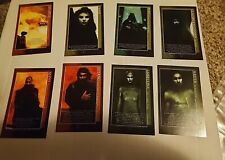
Coheed And Cambria Good Apollo Trading Cards 2005 Amory Wars Full Set Of 8x Rare $500.00

4x RARE Cards Fortnite 2019 CRYSTAL SHARD S1 Luxe Fishstick Bullseye Nog Ops $650.00

Star Wars Funko Pop The Mandalorian Complete Gamestop Box Set LOT 4x Rare Pops $68.00
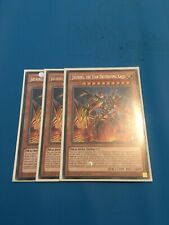
3x Rare/Common Jizukiru, The Star Destroying Kaiju Mixed Set 1st Edition $3.61
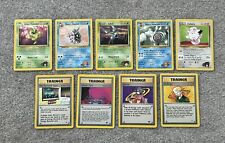
Pokémon Cards Bundle - 9x Rare Non Holo Gym Heroes Set - WOTC TCG $49.77
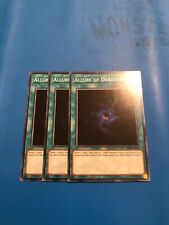
3x Rare/Common Allure Of Darkness Mixed Sets 1st Edition $4.23

4x RARE Cards Fortnite 2019 HOLOFOIL S1 Black Knight Skull Trooper Pump Ghoul $449.00
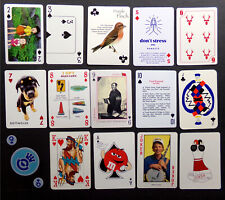
ODD PLAYING CARD LOT: 15x Rare Poker Singles Set Modern Vintage Retro Art Animal $9.00
|